Attention Japanese food lovers- this article is for you! Whether you’re an experienced taster, a fledgling Japanese cook, or you’ve been trying to figure out the difference between the two classic dishes, today I plan on dispelling all of the doubt and questions from your mind regarding sukiyaki and teriyaki.
So, what is the difference between sukiyaki and teriyaki?
The main difference between sukiyaki and teriyaki is that sukiyaki is a nabemono-style dish that combines beef, vegetables, and noodles into a broth made of soy sauce, mirin, and sugar. On the other hand, Teriyaki is a method of cooking that involves basting beef or chicken in a teriyaki sauce before grilling, roasting, or broiling the meat.
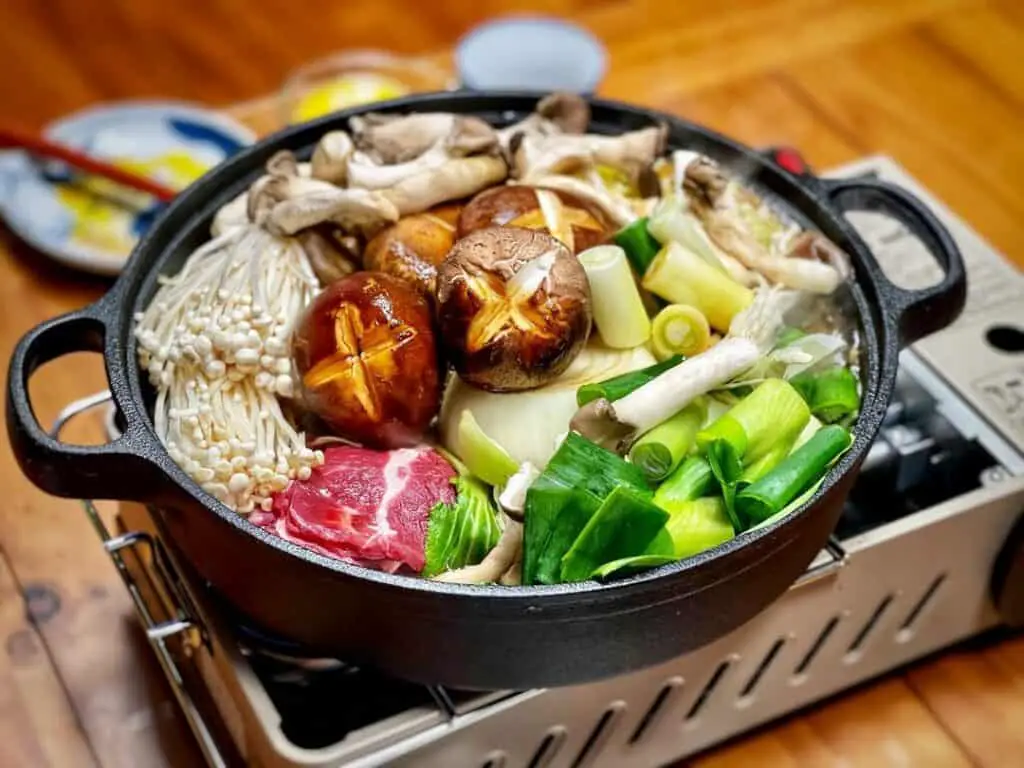

Although similar ingredients are used (soy, mirin, sugar), the two dishes are almost entirely different from one another. If sukiyaki is the Yin, then teriyaki is the Yang. Sukiyaki is more soup-like, whereas teriyaki is more of a grilled dish and tends to dry. I’m about to give you a full crash course in Japan’s two most famous “-yakis,” so make sure you take some notes!
Sukiyaki And Teriyaki: Two Japanese Favorites
Before I get too deep, here’s a disclaimer- I can’t guarantee that you won’t get a sudden craving for Japanese food and spend a bunch of money on takeout by the time you finish reading this article.
Seriously, as I’m writing this, I’m starving. If it weren’t for this cold front, I’d be out on my porch grilling some bomb teriyaki right now. However, it looks like I’m going to have to settle for some Door Dash Japanese tonight…
Alright, so personal hunger pangs aside, let’s get into the nitty-gritty details. You’re here to learn about the difference between sukiyaki and teriyaki- two of Japan’s most popular dishes (and for Japanese food-loving Americans). Perhaps you’ve tried them before, or perhaps you’re reading through a Japanese menu right now trying to figure out which one you want to order.
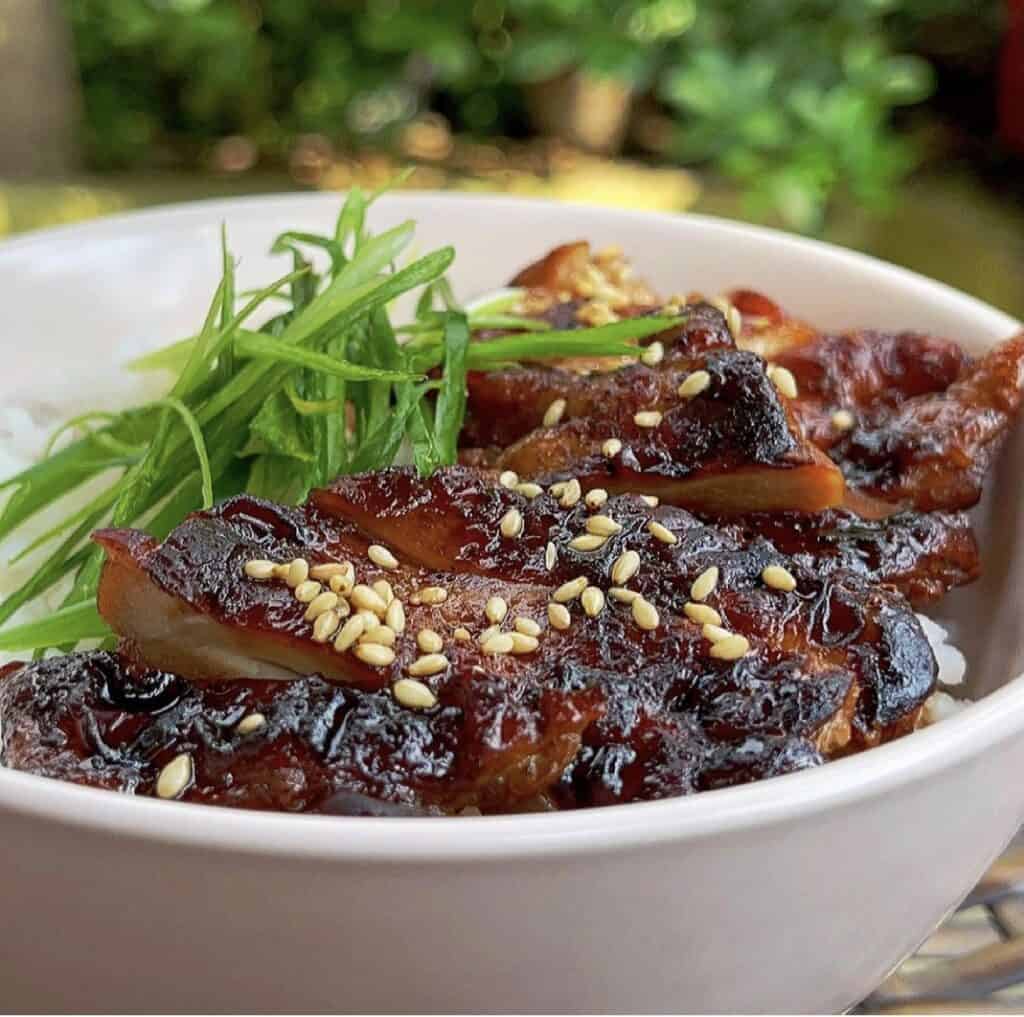
As I mentioned above, sukiyaki and teriyaki’s main difference is that one is a soup-like dish, while the other is usually grilled. Sukiyaki is very popular in the cold fall and winter months and is often served during New Years’ celebrations. Teriyaki is served year-round but is more prevalent during the summer when people can enjoy their outdoor teriyaki grills.
In this way, Japanese food traditions are somewhat similar to American eating traditions. For instance, in America, barbeque-style food is a lot more popular in the summer when everybody is outside hosting cookouts. Conversely, soups, stews, and casseroles are more prevalent in the fall and winter around Thanksgiving and Christmas when it’s cold outside, and people would rather be indoors using their oven and taking advantage of family time.
So basic differences and introduction aside, let’s get down to business!
Defining “Yaki”
As you’ve probably already gleaned, both sukiyaki and teriyaki share the same suffix (word ending). This is not an accident or to intentionally confuse you. In Japanese, the suffix -yaki refers to dishes containing grilled or seared meats.
This is opposed to dishes where the meat is boiled or fried. Seared meats tend to have a slightly smokier, flame-kissed taste. Japan has mastered this flavor profile and is one of the key differences that set Japanese food apart from Chinese, Taiwanese, Vietnamese, and Korean food.
The only food that I’ve had that really comes close to teriyaki is Korean barbeque, which shares a similar cooking methodology but uses different seasonings and sauces.
What Is Sukiyaki?
But wait-
Didn’t we say that sukiyaki was a soup-like dish? Usually, broth-based dishes are known for their softer, juicier, non-flame-kissed meats, right?
Well, you would be correct, but we’re talking about Japanese cuisine here! The reason sukiyaki qualifies as a -yaki dish is because traditionally, the meat is seared in the pan before the broth is added. This gives the beef a slightly pan-seared and grilled flavor that you don’t get from a traditional soup dish (such as Ramen or Pho).
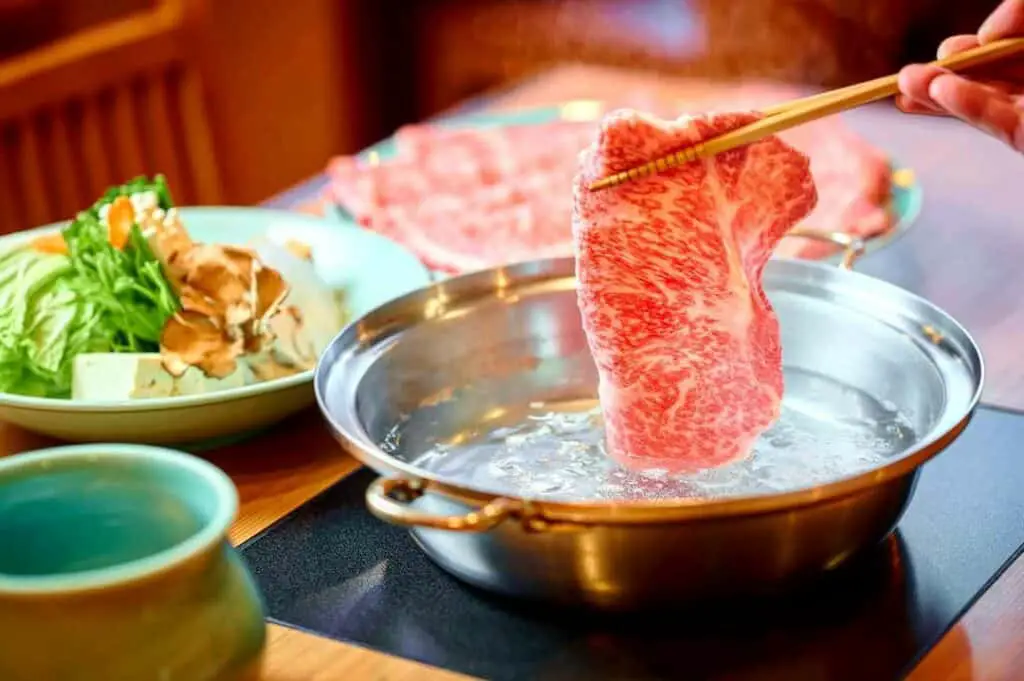
That being said, not all styles of sukiyaki are the same. The dish is ages old and is prepared differently depending on where you go in the country. Not to keep drawing parallels, but it’s very similar to the American barbeque tradition, which can vary significantly from one state to another.
Although traditional sukiyaki does involve pan-searing the beef slightly, not all sukiyaki is cooked this way. Many sukiyaki dishes simply slow-cook the beef in the broth. This method takes a bit longer than pan-searing the beef first, but it creates a very unique, juicy flavor where the meat almost melts in your mouth.
Common Ingredients Used For Sukiyaki
So the differences between types of sukiyaki aside, what else goes into this famous Japanese dish?
Meat
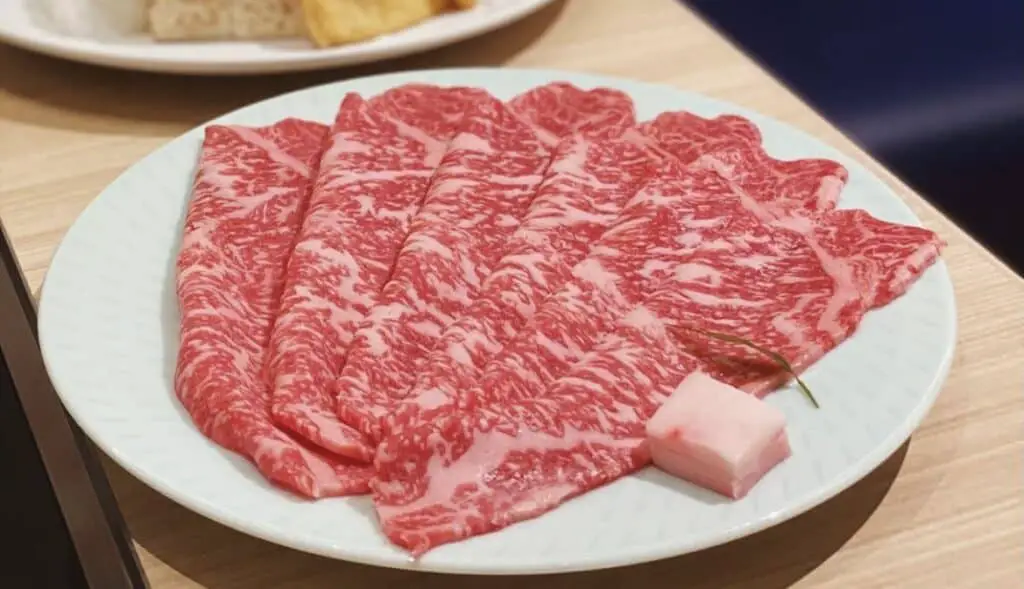
Beef is, by far, the most common form of meat used for sukiyaki. However, pork may be substituted from time to time, depending on the availability of meat. The meat is sliced thin so that the pieces of meat have more surface area and can cook faster. This also helps the meat absorb more flavor from the broth.
As the meat cooks down in the broth, the thicker, more fibrous vegetables are added next. These vegetables include but are not limited to:
- Cabbage
- Spinach
- Bok choy
- Onions
- Scallions
- Leeks
- Mushrooms (typically shiitake)
Vegetables
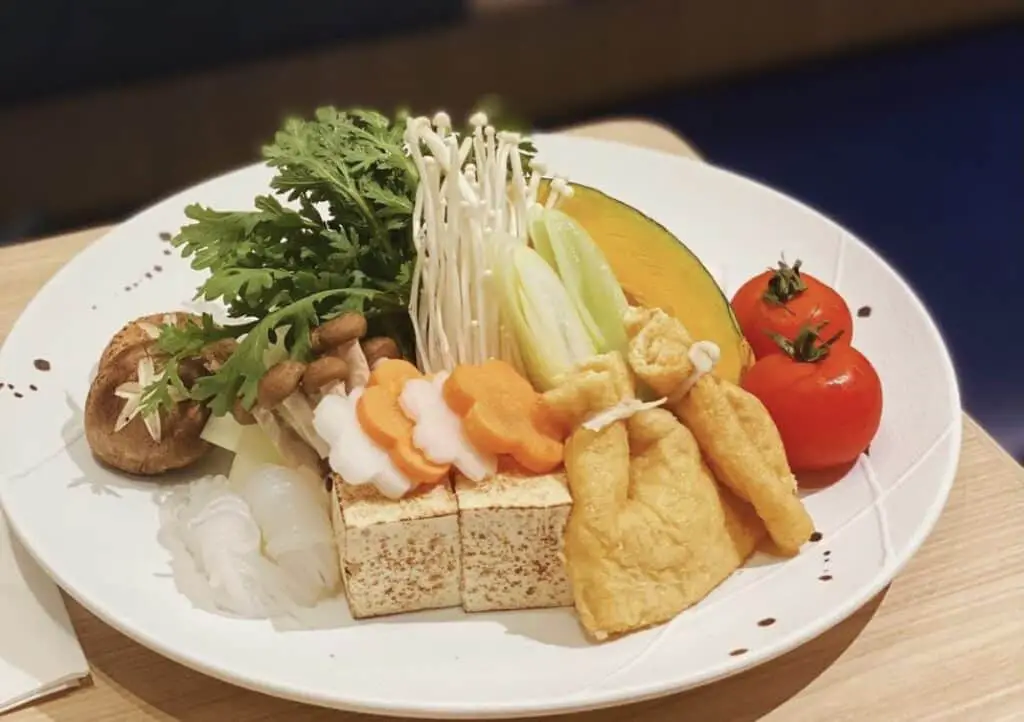
Once the thicker veggies like the cabbage, onion, leeks, and bok choy soften a little, the thinner vegetables like spinach and mushrooms are added. The smaller vegetables are added last because they don’t take as long to cook.
When it comes to making sukiyaki, timing is everything! You must be aware of how long each item in the pot takes to cook if you want to make it perfect. While you could just throw everything in the pot and cook it all together, this would result in an imperfect mix with some of the meat and veggies being overcooked and chewy.
Noodles
The final ingredient added to sukiyaki is usually noodles. Although not all sukiyaki dishes are made with noodles, I would say that the majority of them are. The most common noodles used to make sukiyaki are udon noodles and cellophane “glass” noodles.
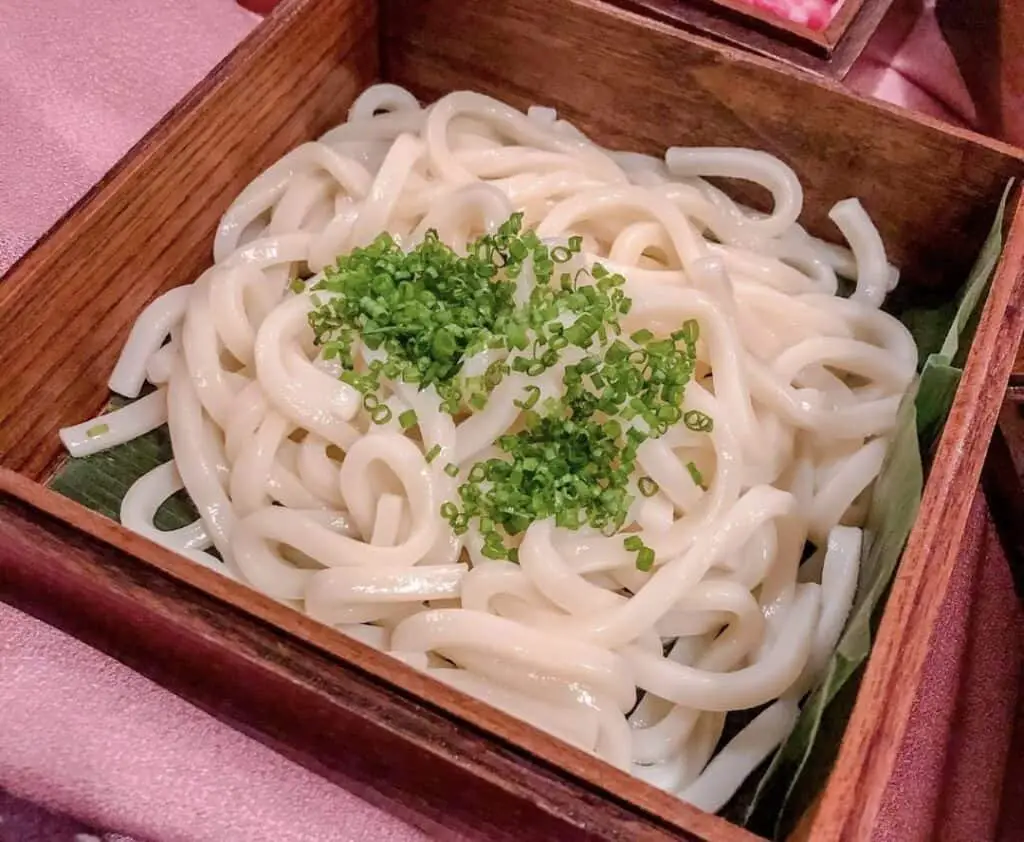
Udon noodles are among the most common noodles in Japan and are typically used in brothy dishes like sukiyaki. They’re some of the biggest noodles in Asia, and strands are usually around 4-millimeters thick.
The extra-thick noodles are incredibly soft and do an excellent job of absorbing the surrounding broth’s flavors, which gives them enhanced flavor.
Although it’s not quite as common, glass noodles are also used. These noodles are so-named because they are transparent. This is because they’re made with potato starch instead of flour (which becomes transparent when combined with water).
Sauces And Seasonings Used For Sukiyaki
The broth that sukiyaki is cooked in is incredibly simple and doesn’t require some of the more complex ingredients that teriyaki requires. Sukiyaki broth has three main ingredients:
- Soy sauce
- Mirin (Japanese rice wine for cooking)
- Sugar
The soy sauce provides all of the sodium and creates a salty, tangy flavor that holds the dish together. The mirin creates a sour aftertaste that accentuates the saltiness of the soy, and the sugar helps to offset the sour flavors from the soy and mirin. Overall, the broth is mild yet flavorful. The longer it’s allowed to cook down, though, the stronger and more potent the broth mixture will become as the water content continues to evaporate from the broth.
What Is Teriyaki?
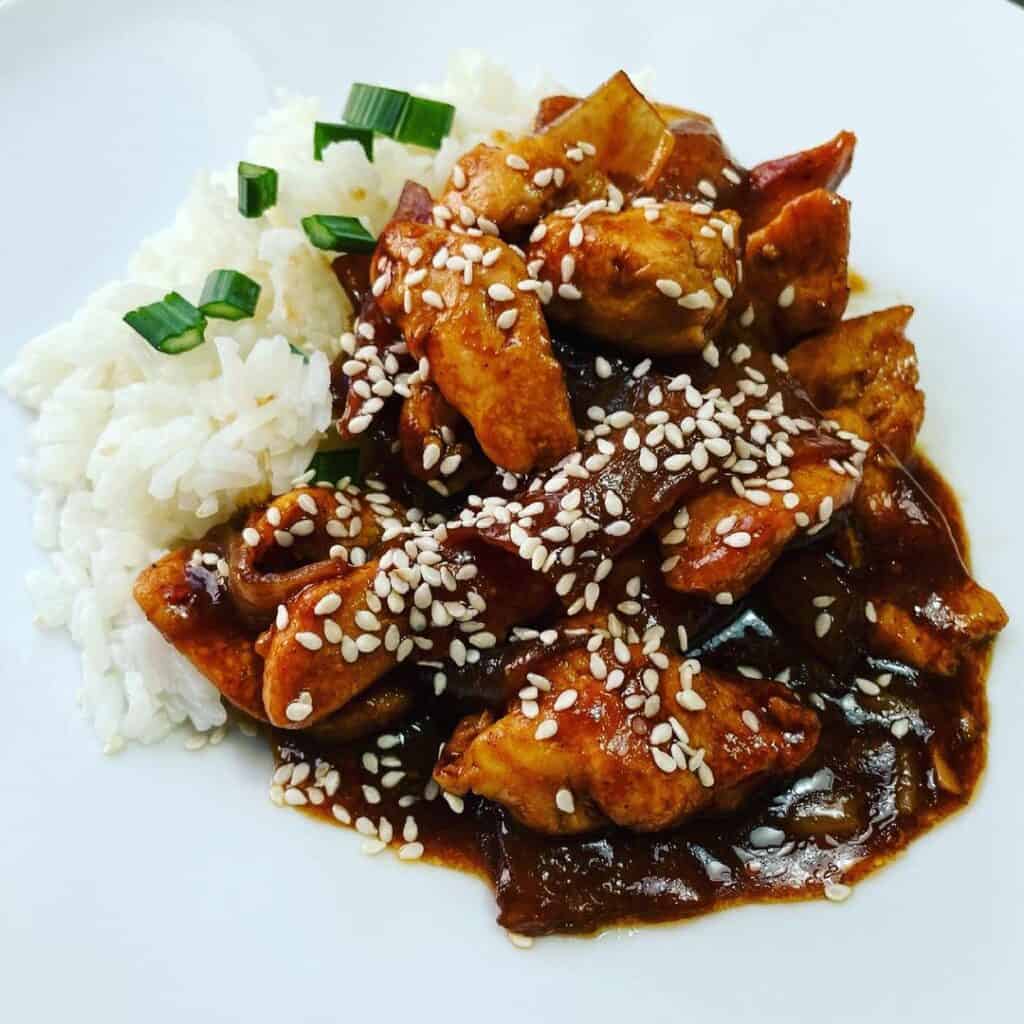
The prefix -Teri translates to “luster” in Japanese. It’s given this name due to the appearance of the meat as it’s cooking. Since teriyaki meat is glazed with a sugary marinade sauce, it has a shiny, lustrous appearance that’s incredibly appetizing as you watch it cook on the grill.
Unlike sukiyaki, teriyaki is not a dish or a meal.
Instead, teriyaki refers to a style of preparing and cooking meat dishes (kind of like barbeque). Unlike sukiyaki, which uses beef most of the time, teriyaki is typically a style of preparing chicken or beef. However, by far, chicken is the more popular of the two since the cooking sauces naturally compliment the chicken.
Whereas sukiyaki relies on cooking the meat in the broth to give it its flavor, teriyaki relies heavily on marinating the meat beforehand. The meat is typically marinated for 12 to 24 hours in a custom marinade made from the following ingredients:
- Soy sauce
- Mirin (rice wine for cooking)
- Garlic
- Ginger
- Sugar
- Sugar
- Seasonings (typically salts or Asian peppers)
After the meat has been allowed to marinate and absorb all of the flavors, the meat is cooked over an open grill or roasted in the oven. Before the meat is placed on the grill, it’s usually re-glazed with another layer of marinade.
Although teriyaki may be served by itself, it’s commonly served with a side of fresh vegetables or white rice. Sometimes it’s skewered; other times it’s cooked saute-style. Personally, I prefer to put my teriyaki chicken on a skewer with some sliced-up veggies and cook it over a grill. Since I like spicy food, I usually throw some extra cayenne pepper or sriracha sauce onto the marinade.
Difference Between Japanese Teriyaki And American Teriyaki
I’d like to take a minute to point out that there is a considerable difference between authentic Japanese teriyaki and American-style teriyaki. In America, “teriyaki sauce” is commonly found on grocery store shelves and used a wing sauce, dipping sauce, or marinade. However, this flavor profile is quite different from Japanese teriyaki.
American teriyaki actually originated out of Hawaii and was crafted by some of the first Japanese settlers. Since they didn’t have all of the ingredients native to their home country, they improvised and added pineapple juice and corn starch to their mixture. Authentic Japanese teriyaki, on the other hand, tends to be far spicier and ginger-based.
Don’t get me wrong; I do enjoy American-style teriyaki. However, I’m just letting you know that there is a difference between the two. I can’t count how many times I’ve taken a friend to eat at a real Japanese restaurant, watched them order the teriyaki chicken, and then listened to them talk about how it tastes “different” from what they’re used to.
Which Is Spicier: Sukiyaki Or Teriyaki?
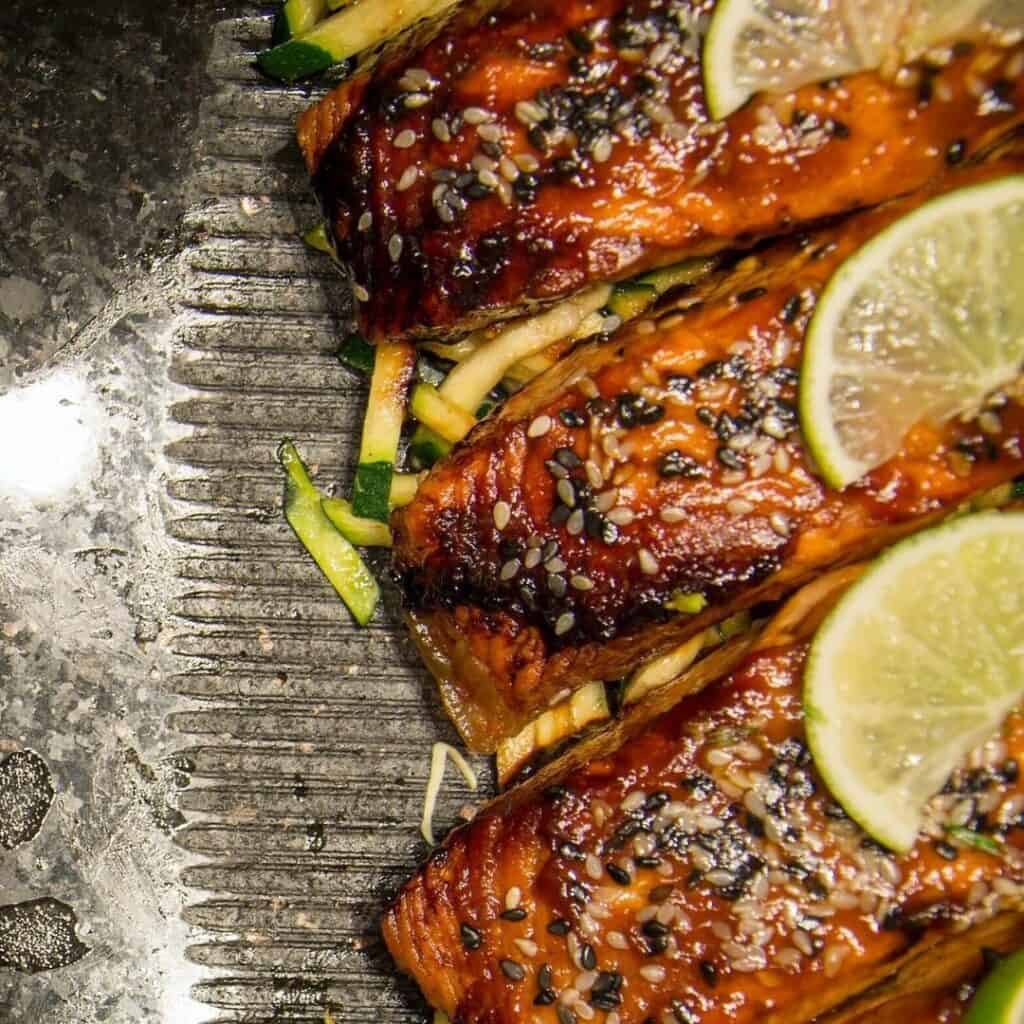
Of the two dishes, teriyaki is, by far, the spicier dish. The fact that it’s grilled or cooked over an open flame tends to lend itself to a hotter flavor. Then, you have the ginger, which is incredibly spicy. The more ginger that’s used the more of a kick you’ll get. In addition to this, some teriyaki styles also season their meats with ultra-spicy Japanese chile powder as well for a fiery punch.
Conversely, sukiyaki is far milder. Although you can certainly add your own additional spices to the brothy dish, it’s not traditionally made to be spicy. In fact, sukiyaki is often referred to as a “friendship dish” since it’s a light, easy-to-eat meal for foreigners who aren’t used to Japanese cuisine.
Which Is Healthier: Sukiyaki Or Teriyaki?
When prepared with all-natural ingredients traditionally, both dishes can be fairly healthy. I would argue that sukiyaki is a little bit healthier since it typically uses more vegetables. However, it’s also common to see vegetables added to teriyaki dishes as well.
Other than that, the only “unhealthy” ingredient that teriyaki really has is the sugar used in the marinade. However, only a small amount of sugar is required, so it usually doesn’t add too many extra empty calories to the mix.
Which Takes Longer To Cook: Sukiyaki Or Teriyaki?
As far as cook time goes, sukiyaki takes a bit longer to cook. Since it’s a slow-cooking method, you’ll usually have to spend a solid 45 minutes or so slowly simmering the ingredients until they’re all fully cooked. On the other hand, Teriyaki usually only takes about 20 minutes (or less) once you get it on the grill!
That being said, teriyaki does need to be marinated beforehand, so it does require a little bit more preparation.